Children and Sports - Physical Education Revision Notes, Class 12 | Physical Education for Grade 12 PDF Download
Exercise Guidelines of WHO for Different Age Groups
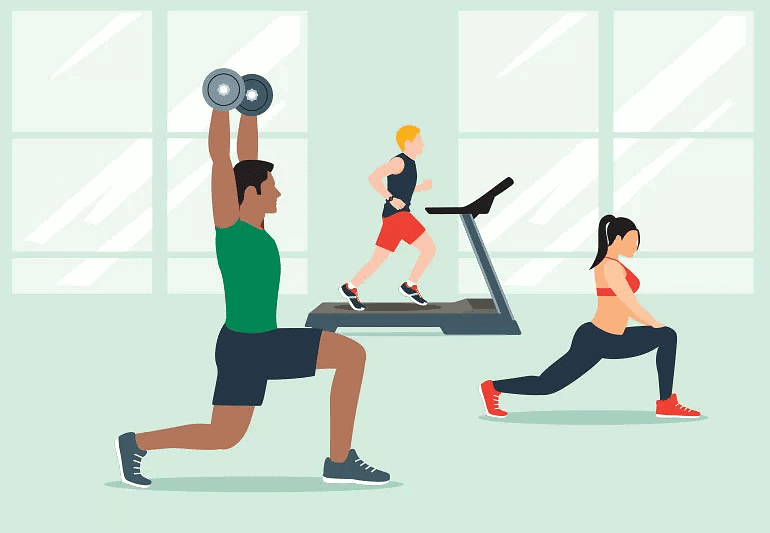
For Children (aged 5 to 17)
- Engage in at least 60 minutes of moderate-to-vigorous physical activity daily.
- Include a variety of activities like playing sports, dancing, cycling, or simply running around with friends.
- Limit screen time and encourage outdoor play for overall well-being.
For Adults (aged 18 to 64)
- Aim for at least 150 minutes of moderate-intensity aerobic activity or 75 minutes of vigorous-intensity aerobic activity throughout the week.
- Additionally, muscle-strengthening activities involving all major muscle groups should be performed at least two days a week.
- Embrace activities like brisk walking, jogging, swimming, and strength training to keep fit and energized.
For Older Adults (aged 65 and above)
- Adults in this age group should follow the same guidelines as younger adults, depending on their physical abilities.
- Focus on activities that improve balance, flexibility, and muscle strength to prevent falls and maintain independence.
- It’s important to consult a healthcare provider before starting any new exercise regimen, especially if there are any underlying health conditions.
Common Postural Deformities
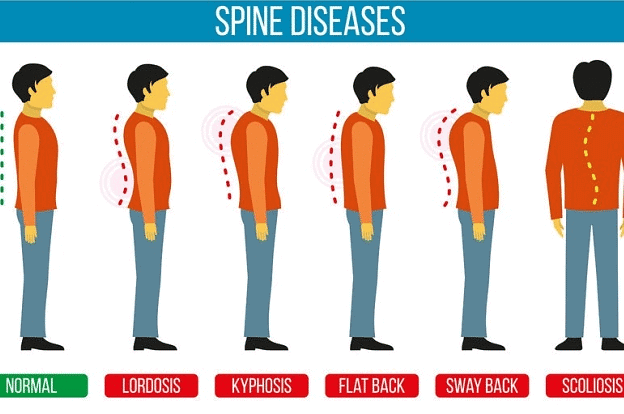
Spinal Curvature
This type of deformity is related to the vertebral column. This deformity develops by carrying excessive weight beyond capacity or weak muscle causing curvature of the spine. There are three types of spinal deformities:
- Kyphosis
- Lordosis
- Scoliosis
Kyphosis
This is a problem of the thoracic cage and clavicle spine, causing an abnormal curvature in the spine at the front, resulting in a hump at the back of the body.
Causes:
- Malnutrition
- Illness
- Insufficient exercise
- Rickets
- Carrying heavy loads on the shoulder
- Unsuitable furniture
- Weak muscles
Corrective Measures:
- Sit in the chair such that the back touches the chair
- Keep a pillow under your back while sleeping
- Perform back-bending Yoga Asanas regularly like chakrasana, dhanurasana, and bhujangasana
Lordosis
It is the inward curvature of the spine. In this deformity, the lumbar spine bends in front beyond the normal level, causing the abdomen to be ahead of the body.
Causes:
- Imbalanced diet
- Improper environment
- Improper development of muscles
- Obesity
- Diseases affecting vertebrae
Corrective Measures:
- All forward bending asanas and exercises are helpful for correcting Lordosis
- Perform Yoga such as Paschimottanasana, Halasana
- Practice forward bending and alternate toe touching
Scoliosis
It is the problem of the spine, where the vertebral column bends sideward. Scoliosis causes one shoulder to be down and another raised up. Body weight is shifted towards one side, causing pressure on one side of the foot.
Causes:
- Differences in leg length
- Lifting weights towards one side
- Wrong standing postures
Corrective Measures:
- Sideward bending exercises should be done on the opposite side of the curve
- Hold a horizontal bar and swing your body to the sides
- Perform chin-ups
Three Lower Extremity Deformities
Knock Knee
In this deformity, knees knock or touch each other while standing, walking, and running, increasing the gap between the ankles.
Causes:
- Lack of balanced diet, especially Vitamin D, calcium, and phosphorous
- Rickets
- Weak legs
- Obesity during childhood
- Overweight
Corrective Measures:
- Pillow exercise: Pillow is kept between legs and press the legs
- Walk over outer edges of feet
- Perform Yoga like Padmasana, Vrikshasana, and Dhanurasana
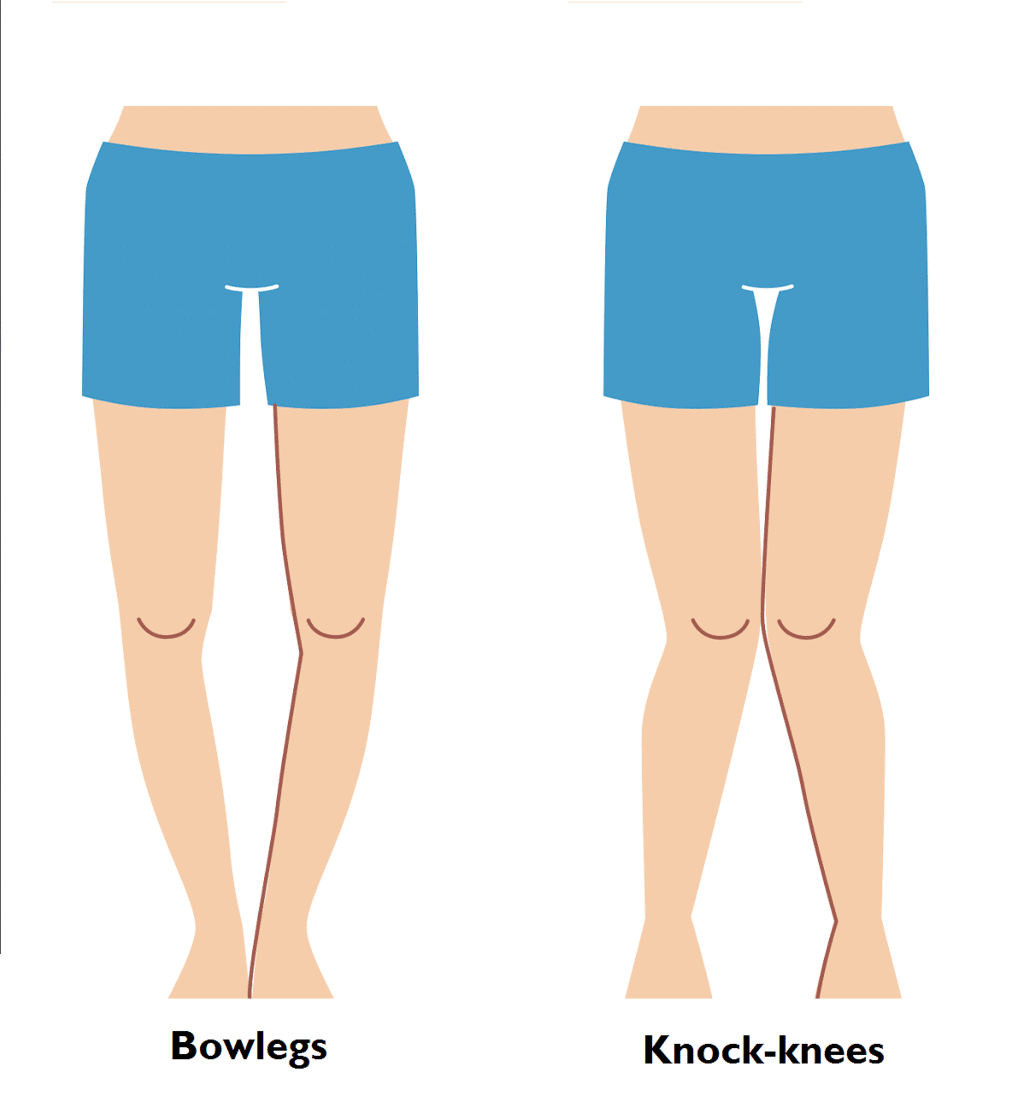
Bow Legs
In this deformity, legs bend outward, widening the space between knees, causing a lot of pressure over the lateral edges of feet.
Causes:
- Rickets
- Early childhood walking with weight
- Obesity
- Faulty shoes
Corrective Measures:
- Take a balanced diet
- Walk with toes inward
- Perform Yoga such as Garudasana, Ardhmatseyendra Asana
Flat Foot
It is an abnormal condition of the foot in which the arch of the foot collapses, causing the entire sole to touch (complete or near complete) the ground. Children with flat feet feel pain in their feet when they walk or run.
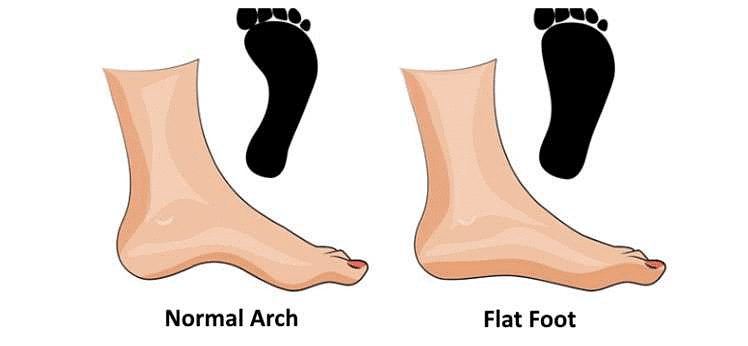
Causes:
- Weak muscles
- Poor quality shoes
- Overweight
- Obesity
- Prolonged standing
Corrective Measures:
- Walking on heels
- Rope skipping
- Jumping on toes
- Using good quality shoes
- Writing with foot
Women’s Participation in Sports - Physical, Psychological, and Social Benefits
Women are equally important in society and participate in social activities. Today, modern society has started accepting women's participation in sports competitions. Indian society has recognized many Indian sportswomen like Mary Kom, Saina Nehwal, Sania Mirza, PV Sindhu, Jwala Gutta, etc.
Physical Benefits
- Improved Fitness
- Weight Management
- Stronger Bones
- Better Cardiovascular Health
Psychological Benefits
- Boosted Confidence
- Stress Relief
- Improved Mental Focus
- Mood Enhancement
Social Benefits
- Teamwork and Communication
- Empowerment
- Social Support
- Leadership Opportunities
Causes of Less Participation of Indian Women in Sports
- Gender inequality & social attitude
- No parental encouragement
- Traditional society
- Less motivation and inspiration
- Male dominant culture
- Less availability of women coaches
- No independent games facilities for women
- Economic Factors
- Social Customs and Rights
- Low Health Consciousness
- Less Media Coverage
- Less spectators interest
- Lack of Incentives & Career
Special Consideration (Menarche and Menstrual Dysfunction)
Women undergo many physiological and psychological changes in their life which have to be accepted in a positive way.
Menarche
- Menarche is the beginning of the menstrual cycle in females, considered the central event of female puberty.
- After the onset of menarche, females experience many physiological and anatomical changes like increased body mass, secretion of estrogen, gain in height, widening of the pelvic region, etc.
- It occurs between 12 to 14 years of age and varies due to biological, genetic, environmental, and nutritional factors.
- Women with delayed menarche may get more success in some sports like gymnastics.
- Those who have early menarche may have an advantage in sports like swimming and rowing.
Menstrual Dysfunction
- It is a disorder or irregular condition of a woman's menstrual cycle.
- It can also be defined as abnormal bleeding during the menstrual cycle.
- The normal cycle varies from 21 to 35 days.
- These irregularities are generally higher in athletes than in non-athletic women.
- During the period of menarche and menstrual dysfunction, females can participate in moderate physical activities without any complications.
- Heavy training should be done with special care of personal cleanliness and hygiene factors.
- If complications arise, women should consult with a gynecologist.
Female Athlete Triad
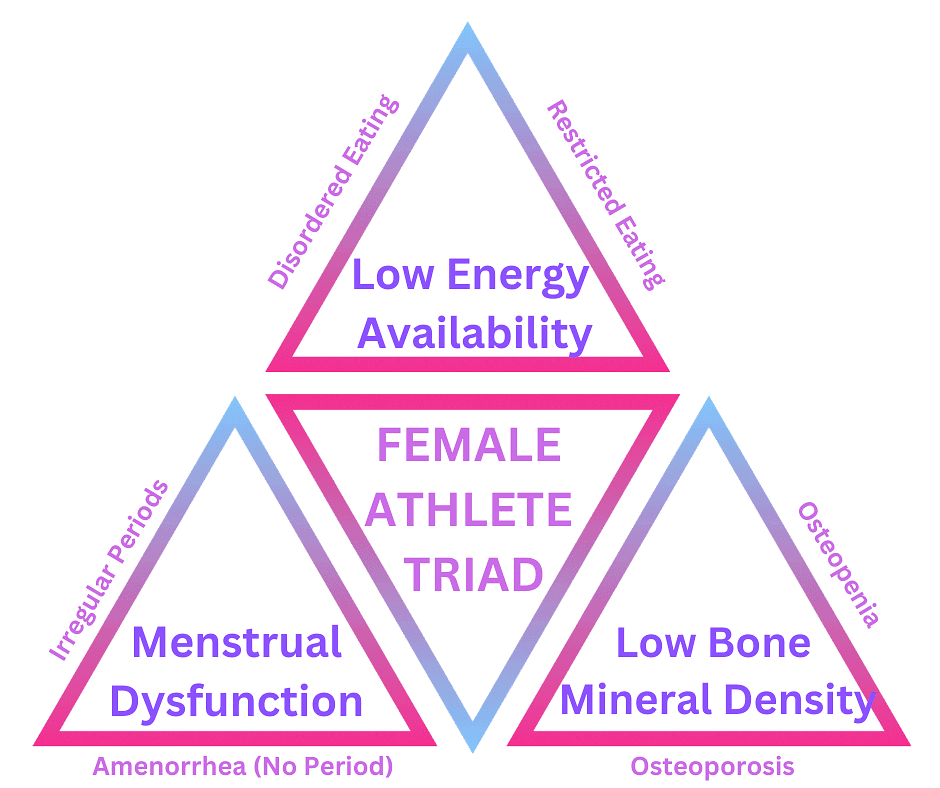
- It is the syndrome in females which includes Osteoporosis, Amenorrhea, and Eating disorders, known as the Triad.
- These can have serious lifelong health consequences.
- The symptoms of the triad are fatigue, low body weight than required, frequent injuries, loss of fitness, low self-esteem, cessation of menstruation, etc.
Osteoporosis
It is the weakening of bones due to the loss of bone mineral density. Low levels of estrogen and poor nutrition, especially lower calcium intake, lead to Osteoporosis.
Causes
- Insufficient calcium and vitamin D in the diet
- Hormone level decrease
- Menstrual dysfunction for more than six months
- Eating disorders like anorexia and bulimia
Amenorrhea
Amenorrhea is the absence of the menstruation cycle, often defined as missing one or more menstrual periods. It also refers to the absence of menstruation in someone who has not had a period by age 15.
Causes:
- Main causes of primary amenorrhea relate to hormone levels, although anatomical problems can also cause amenorrhea
Eating Disorder
Many girls or women try to lose weight unethically to improve their performance or look good, leading to serious health problems. There are two types of eating disorders:
Anorexia Nervosa
- It is an eating disorder causing people to obsess about weight and what they eat. Anorexia is characterized by a distorted body image, with an unwanted fear of being overweight. People try to maintain a below-normal weight through starvation or excessive exercise.
Bulimia Nervosa
- In this disorder, female athletes eat an excessive amount of food and vomit intentionally to avoid gaining weight. It is a serious eating disorder marked by bingeing. Bulimia is a potentially life-threatening eating disorder. People take dangerous steps to avoid weight gain like vomiting (purging), excessive exercising, or fasting.
|
17 videos|65 docs|35 tests
|
FAQs on Children and Sports - Physical Education Revision Notes, Class 12 - Physical Education for Grade 12
| 1. How can sports help children in their physical education? |  |
| 2. What are the benefits of children participating in sports activities? |  |
| 3. How can parents encourage their children to engage in sports? |  |
| 4. What role does physical education play in a child's development? |  |
| 5. How can schools ensure that children are actively participating in sports and physical education? |  |

















